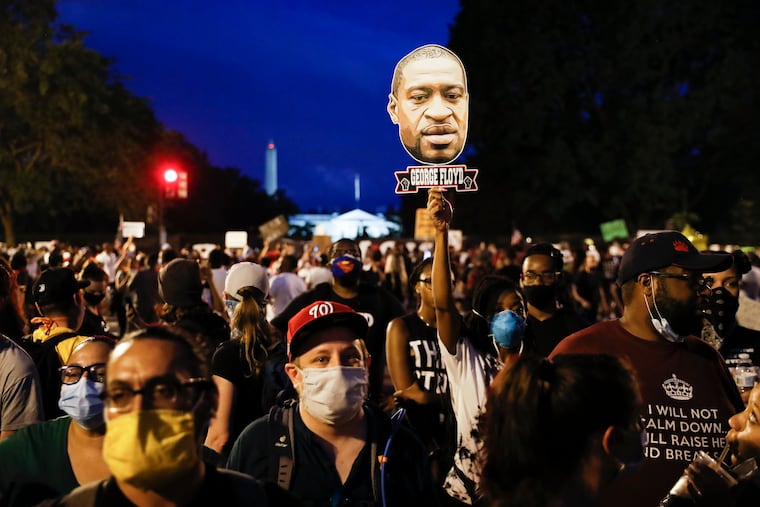Was ‘the Resistance’ wrong to focus on Trump? | Will Bunch Newsletter
Why it took a police killing, and not a dictatorial president, to finally fill America’s streets

Ten thousand people in the street ... singin’ songs and a-carrying signs, mostly say ‘hooray’ for our side. For what it’s worth, America just survived an incredible week, with new optimism that the long arm of the moral universe is bending toward justice. Did someone forward you this email? Sign up to receive this newsletter weekly at inquirer.com/bunch. We are covering a revolution here!
Why it took a police killing, and not a dictatorial president, to finally fill America’s streets
The remarkable images that came out of Washington, D.C. this weekend were, in some ways, a near-fulfillment of the political fantasies of the large but loosely aligned group called “the Resistance” that had literally started forming in the pre-dawn hours of November 9, 2016 — vowing to protest, impede and eventually end the presidency of Donald Trump by virtually any means necessary.
Now, nearly 41 months into Trump’s term, 1600 Pennsylvania Avenue appeared under siege, literally surrounded by tens of thousands of chanting, occasionally singing protesters. In response, the 45th president has surrounded his palace with a new insurmountable fence, and had even famously retreated to the White House bunker for a short time, in fear of the crowd. On the surface, it looked very much like what one clique on the left — the faction that has protested Trump’s unfitness from 2017′s Women’s March straight through his impeachment trial this year — had prayed for, a Hong Kong-style protest aimed at bringing an end to Trumpism.
Except there was just one thing — the hordes out in the streets of D.C. (and literally hundreds of other U.S. cities and towns) this weekend weren’t there to protest Trump, not really. The much deeper issues of systemic racism in America, enforced by violent policing and illustrated by the killing of one man, George Floyd, on a Minneapolis street corner, brought out thousands of Millennials/Gen Z’ers and people of color who’d once viewed the Trump “resistance” as more their mom’s fight.
As early as January 2018, when I attended the large but somewhat unfocused second annual Women’s March, I began to worry that “the Resistance” — and its appeal weighted toward white suburban women older than 35 — was falling short of what was needed for radical change that would address not only Trump’s election but America’s broader problems. There were lots of families in strollers, and no cops in riot gear. Was that something to be celebrated, or did the lack of police presence prove that the established order didn’t feel threatened?
I spoke Tuesday morning with Dana Fisher, a University of Maryland sociology professor (and Philly-area native) who’s been studying Trump-era protest and recently authored American Resistance. She argues that the suburban-flavored movement that emerged organically from the ashes of Trump’s election is now more ready to tackle thornier issues such as racism — and with a more confrontational approach —than at the start of the journey.
“The people who started out as the mainstays of ‘the Resistance’ needed this time,” Fisher told me. She, a colleague and some volunteers surveyed protesters last week in New York, D,C., L.A., and even London. They found a significant number had taken part in earlier protests like the Women’s March, but also something surprising: That sizable numbers — 65% in Washington, for example — now agree that “some level of violence is justified in pursuit of political goals,” up sharply from early protests.
On one hand, I can’t help but wonder if the Trump resistance (and I’m including myself and my own focus as a columnist) — while it helped motivate #MeToo and the 2018 flip of the House — could have accomplished even more from the get-go. What if the movement had focused less on Trump himself and more on the social justice issues, as well as climate change, that bring young people into the street and force The Establishment to react? In hindsight, it probably would have been better to view Trump not as the illness but as an especially gross symptom of a larger disease.
But let’s not lose sight of the good news here. What started as a narrow resistance movement has now been radicalized. A growing number of Americans get it now: The removal of Trump by next January is still very important, but it’s only the starting line for a better world.